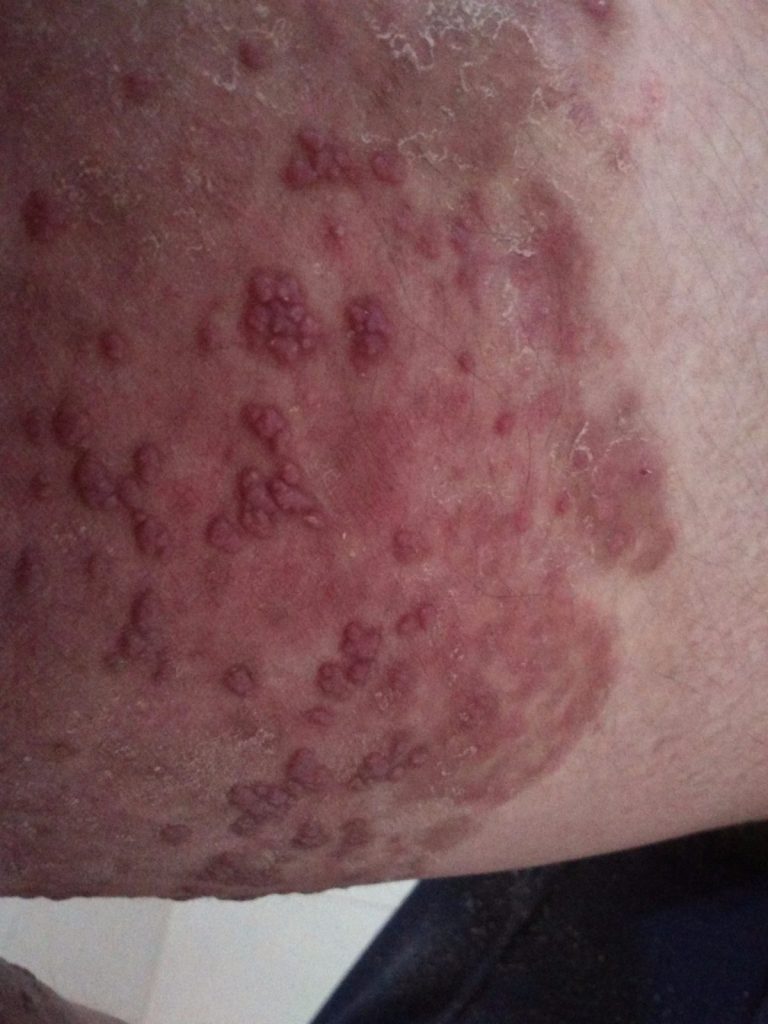
You’re getting dressed, and your hand brushes against your thigh. The skin doesn’t feel smooth. A closer look in the mirror reveals a series of small, rough bumps, often concentrated on the fronts or backs of your thighs. They might be flesh-colored or have a slight red tint, and they never really seem to come to a head or go away. Your first instinct might be to treat them like acne, using harsh scrubs or acne creams.
But when these bumps are stubborn, don’t contain pus, and are focused on areas like the thighs and upper arms, they are almost certainly not acne. They are very often a sign of a harmless but frustrating genetic skin condition that affects how your body sheds dead skin cells.
This condition is called Keratosis Pilaris (KP), often nicknamed “chicken skin.”
The Real Culprit: A Traffic Jam in Your Pores
Think of each hair follicle on your skin as a tiny chimney. Inside, skin cells are constantly being generated and pushed to the surface to be shed—a process called exfoliation. In people with KP, this process is a little too enthusiastic.
The body produces an excess of a protein called keratin, the same stuff that makes up your hair and nails. Instead of shedding smoothly, this excess keratin, along with dead skin cells, forms a hard, microscopic plug that blocks the opening of the hair follicle. The small, rough bump you see and feel is this plug, with a tiny, sometimes coiled, hair trapped beneath the surface. The redness around it is simply inflammation from the trapped material.
Why It’s Not Acne
This is the most important distinction to make, as treating it like acne will only worsen the dryness and irritation.
- Acne is caused by a combination of oil, bacteria, and inflammation deep within the pore.
- Keratosis Pilaris is a keratin-building disorder. It’s a dry skin condition, not an oily one. The bumps are dry, rough plugs, not pus-filled pimples.
What Your Skin is Trying to Tell You
Keratosis Paris isn’t a sign of poor hygiene or a serious disease. It’s your skin’s way of telling you two main things:
- “We have a genetic predisposition for this.” KP often runs in families and is most common in people with naturally dry skin or those who have eczema.
- “Our environment is too dry.” The condition almost always gets worse in the winter, when cold outdoor air and dry indoor heat rob the skin of its natural moisture. It’s your skin’s protest against a lack of humidity.
A Gentle Approach to Smoother Skin
You can’t cure KP, but you can absolutely manage it with a consistent, gentle routine focused on exfoliation and intense moisturization.
- Chemical Exfoliation is Key:Avoid harsh scrubs. They can inflame the bumps. Instead, use a gentle chemical exfoliant in the shower. Look for lotions or washes containing:
- Lactic Acid: Gently dissolves the keratin plugs and is a superb hydrator.
- Glycolic Acid: Helps to loosen the bonds between dead skin cells.
- Salicylic Acid: Can help penetrate and break down the plug.
- Moisturize, Moisturize, Moisturize: This is non-negotiable. Immediately after showering, seal in moisture with a thick, rich cream. Look for ingredients like Urea, Ceramides, and Shea Butter. These help repair the skin’s barrier and keep it supple, preventing the keratin from clumping.
- Be Patient and Consistent: KP responds to regular care, not aggressive attacks. It can take 4-6 weeks of daily treatment to see significant improvement.
These bumps on your thighs are not a flaw or an infection. They are a common, genetic conversation your skin is having with the environment. By listening to this message and switching from an acne-fighting strategy to a gentle, hydrating one, you can calm the inflammation, smooth the roughness, and finally make peace with the skin you’re in.